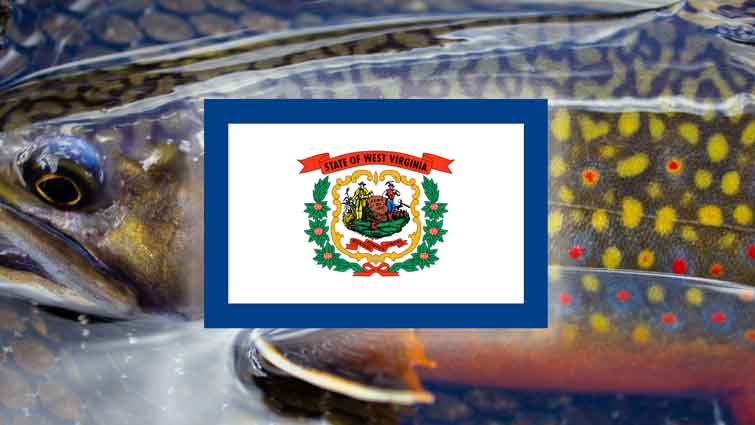Fly fishing requires a heck of a lot of technique compared to other fishing methods. You can’t rely on the lure to do all the work for you so the best fly anglers perfect their craft by mastering various casting techniques.
The better you are at casting your flies, the better chance you have of pulling in that rainbow trout you’ve only ever dreamt of.
In this guide, let’s cover some peak insider tips on mastering the art of the fly rod cast.
10 Tips to Improve Your Fly Casting Accuracy
Fly casting is one of those things that takes time and patience. Improving your cast is like aging a fine wine. You start with the fundamentals, build yourself a nice base, and it gradually improves with each passing day.

1. Love On Your Rod
A lot of fly anglers try so hard to perfect their craft but they forget that the better results they seek are right in their hands. If you don’t have a lot of fly rod experience, you might think that the key to your cast is positioning and power but that’s not entirely true.
Your line and your rod are the keys to your cast. Since your fly weighs almost nothing, there’s no weight to send the fly in the direction you want it to go.
As a result, you have to rely on the weight of your line and your rod to create enough power to force the fly where you want it to go.
For example, you can’t start a forward cast without back casting first. The reason for this is because the back cast is where the momentum is created. The back cast causes your rod to flex so when you fire forward, the energy you created is passed through to the line which sends the fly forward.
Why do I call this “loving on your rod” and why does it sound like a slightly dirty pun?
It’s because you need to develop a relationship with your fly rod to the point where you understand exactly how it’s going to behave with each movement you make.
Each rod is a little different, every length will behave differently, each type of line will act a certain way. Have patience, learn, and understand each of these factors.

2. Slow Down
We all want everything to happen yesterday and I can tell you from experience, I only speed up when I get angry or frustrated. If you find yourself not getting the casts you want, now is not the time to cast faster, it’s the time to slow down and think.
The faster you get, the less focused you become on your technique. This reduces the efficiency, distance, and accuracy of your casting.
Believe it or not, fly casting has a lot to do with breathing. Breathe calmly, focus on what you’re doing, and restrict your cast to about 15 feet of line. Doing this will allow you to prioritize your technique and fundamentals instead of worrying about distance.

3. Look Behind You
If I had to pick the most important tip in this guide, it would be this one. The back cast is the most important part of your fly fishing cast but most anglers take it to be the least important.
Since it’s not actually part of your forward cast, many fly anglers neglect and ignore it. If you’re struggling to get an accurate cast, take a look at your back cast to see how your line is unraveling before your forward cast.
Work on your cast with this in mind. Unless you perfect your back cast, you won’t be able to place the fly where you want it.
Don’t forget about the different types of backcasts as well. If you find yourself in a position where the back cast is tight because of low hanging trees or a narrow creek, use a side cast and perfect that.
Have as many options as needed in your repertoire and look at your back cast as you’re doing it. Make sure you only move your head when you look back so you don’t distort your cast.

4. Practice Makes Perfect
When it comes to mastering the art of fly casting, there's no substitute for consistent practice. Dedicate specific time slots in your schedule for practicing fly casting. Whether it's a few minutes every day or longer sessions on weekends, consistency is key.
Like in many aspects of life, you need to start somewhere. If you plan to fish for survival, you’ll need to practice in a comfortable setting where there aren’t a lot of other anglers around.
I recommend starting in your yard with targets. You don’t even have to have a fly or nymph on the end of your line. Set up targets and practice hitting them. Explore various casting techniques, such as overhead cast, roll cast, and sidearm cast.
5. Track Your Thumb
One of the most crucial aspects of achieving a precise and controlled fly casting technique is tracking your thumb throughout the casting motion. Proper thumb placement and movement can significantly influence the accuracy and distance of your cast.
Start by understanding how your thumb fits into your casting grip. Your thumb should rest lightly on top of the rod grip, opposite your index finger. This provides stability and control during the casting stroke.
Focus on maintaining a straight line with your thumb and rod tip. During your casting stroke, your thumb should move in a straight line from the starting position to the stopping position, while the rod tip follows a similar path.

6. Cast With Both Arms
Casting with both hands offers numerous benefits. It allows you to change casting angles when obstacles are present, reduce fatigue by alternating hands, and improve your accuracy and control when fishing from varying positions.
Use your dominant hand's casting technique as a model. Mirror the grip, stance, and casting mechanics as closely as possible with your non-dominant hand.

7. Cast the Tip
"Cast the tip" refers to a crucial technique in fly casting that involves leveraging the flexibility and power of the rod tip to achieve longer distances and more accurate presentations. By understanding how to effectively cast the tip of the fly rod, you can enhance your casting performance and improve your chances of success on the water.
Modern fly rods are designed to bend, or load, during the casting stroke. The tip of the rod is particularly important in this process. As you initiate your cast, the energy you apply to the rod is transferred through the rod's flex, propelling the line forward.
Just before the rod reaches its maximum bend (or "load"), pause momentarily to feel the tension in the rod. This is the point where the rod is storing the energy needed for the cast.

8. Keep Your Casts Closer and Graduate
Achieving mastery in fly casting involves not only casting longer distances but also understanding the importance of accuracy and control, especially when starting with shorter casts.
Begin by casting at short distances, focusing on accuracy and line control. Aim for specific targets to refine your ability to place the fly exactly where you want it.
Doing so will teach you to manage your line and concentrate on consistency. This consistency forms the basis for adjusting and adapting your casting style as you move to longer distances.
Pay attention to the timing of your casting stroke. Proper timing ensures that the rod loads efficiently and delivers power to the cast.

9. Use Variable Arc and Stroke
Once you feel like you’ve mastered the slow, short, and consistent cast, you want to focus on more dynamic skills. One way to elevate your casting prowess is by incorporating variable casting arcs and strokes. By mastering these techniques, you can adjust your casting style to suit different scenarios and achieve optimal results.
First, you need to understand what are and stroke variations are:
Arc Variation: The casting arc refers to the path your rod tip follows during a cast. A shallower arc is used for delicate presentations, while a steeper arc generates more power and distance.
Stroke Variation: The casting stroke is the movement of the rod from the starting position to the stopping position. A shorter stroke is suitable for short casts, while a longer stroke generates line speed for longer distances.
Practice transitioning smoothly between different arcs and strokes. The ability to seamlessly adjust your casting style is crucial for quick adaptations on the water.
10. Stay Straight
Position your body perpendicular to your target. This alignment allows for a more natural casting motion and helps prevent the line from crossing your body.
Ensure that the line is laid out straight in front of you before initiating the casting stroke. Proper line layout minimizes tangles and knots during the cast.
Initiate your casting stroke slowly and gradually accelerate as you go. A controlled start prevents jerky movements that can cause the line to wander off track. By staying committed to the principles of maintaining a straight line during your fly casting, you'll significantly enhance your accuracy, control, and overall success as an angler.
Final Thoughts
In the realm of fly fishing, the art of casting isn't merely a means to an end; it's an intricate dance between angler and water, a dance that demands precision, adaptability, and skill.
Through the journey of perfecting your fly casting, you've embarked on a path that leads to not only longer distances but also enhanced accuracy, versatility, and control.
As the water ripples and the sun dances on its surface, you cast not only for fish but for the sheer joy of casting itself—a symphony of motion, skill, and connection. May your fly always find its mark, and may the lessons learned on this journey resonate with every flick of your wrist, every pause, and every release, creating a lifelong legacy of fly casting mastery.
Contributed by:
Coty Perry
Coty comes from a long line of bass anglers but was one of the first (and only) people in his family to break away from the muck and mud to fish moving water. When he’s not chasing smallmouth on the Susquehanna River, he’s playing something involving a ball with his son.







